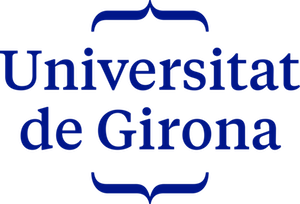
Patrick Harpur: The previous and inner look. The secret fire of the philosophers
There are other worlds, but they are in this one.
Paul Éluard
Now I have a fourfold vision,
And a fourfold vision is given to me;
It is fourfold in my supreme enjoyment
And threefold in the night of soft repose.
And always double. God keeps us
From Newton’s Single vision and dream!William Blake
The “true matter” is the secret fire of the philosophers, according to the alchemists. But the secret fire goes far beyond alchemy. It was a secret handed down from antiquity - from Orpheus, from Moses, from Hermes Trismegistus, they say - in a long series of links that constituted what the philosophers called the Golden Chain. This august succession of philosophers embodied a tradition that we have ignored or labeled “esoteric,” even “arcane,” but which continues to run like a vein of mercury beneath Western culture, emerging from the shadows in times of intense cultural change. […]
It is customary-almost universal outside our culture-to understand that the physical body is also “subtle” and therefore can easily be taken to the Otherworld because it is not basically something material. It is a strictly Western peculiarity to confuse the physical with what is literally real. It is the result of the Christian polarization between soul and body. Outside of Christianity and other monotheistic religions, the soul is almost material, as the body is almost spiritual, and both form a “daimonic” whole. We are fluid organisms that pass easily from this world to the other, from life to death. […] The Other World, which surrounds us completely, would seem to us an earthly paradise if we would simply clear “the doors of perception”, as Blake says, and see the world as it really is, “infinite”.
- Patrick Harpur, El fuego secreto de los filósofos. Una historia de la imaginación, trad. Fernando Almansa, Atalanta, Vilaür (Girona), 2006, 20206, p. 21, 59.
Patrick Harpur (Windsor, England, 1950), now living in Dorchester, graduated in Classical English Literature at Cambridge. He traveled in Africa and worked in an English publishing house, but left in 1982 to devote himself to writing.
In the text of this course, Patrick Harpur, starting from fields as heterogeneous as philosophy and Greek mythology, romantic poetry, alchemy, Jungian psychology, Renaissance magic, shamanism, modern science, fairy tales and ghosts, Darwin’s nausea or Proust’s madeleine… shows us a history of the Imagination, a fascinating and coherent itinerary in western culture, in those times in which it has been wanted to provide the world with a sense formed through symbolic images.
With intelligence, Harpur shakes the rigid “myths” that have governed our rational universe in recent centuries to remind us of the existence of another diametrically opposed way of seeing the world, which consists in knowing how to also contemplate things from the inner eye of the Imagination; for the secret of this singular story lies, above all, in understanding this subtle metaphorical way of observing reality, despite the fact that it is a vision that modern orthodoxy has always wanted to marginalize.
El fuego secreto de los filósofos [2002] ends up forming a trilogy with two other essays by Harpur, Realidad daimónica. Una guía de campo para el Otro Mundo [1995] and La tradición oculta del alma [2011]. Linked with the graceful ribbon of his novel (essay), which follows the alchemical tradition: Mercurius, o el matrimonio de Cielo y Tierra [1990], text that has become a cult book.
As a complementary reading we propose the text by Luis Racionero, finalist in the V Anagrama Essay Prize (1976), written after his immersion in the cultural revolution of the ’60s during his stay in Berkeley-California (1968-71), a work that was read with passion and that opened many doors to the young people of the counterculture of the ’70s in that country, of which he himself was an active member. It is a long-running text, republished to date.
The “underground” is the tradition of heterodox thought that runs parallel and subway throughout the history of the West. From this universalist, anti-authoritarian, communal, libertarian and decentralizing tradition emerged in the 1960s the “counterculture”, which was formally characterized by its emphasis on rock music, psychedelic drugs, communes and oriental and hermetic philosophy. […] Three are the currents that nourish the ideological flow of the “underground” on display: individualist philosophy (romantics, anarchists, amoral ethics [Hesse], imagination [Blake], rebellion), Eastern philosophies (Zen, yoga, Taoism, Sufism, tantrism, mysticism/modern physics) and psychedelic philosophy (the journey, shamanism [Castaneda], criticism of immaculate perception, rationalism/power, the mind as energy). […] When conditions are less repressive, the great “underground” tradition will emerge again and will be embodied in a movement formally different from the “counterculture” of the sixties, but whose philosophical bases will be similar.
- Luis Racionero, Filosofías del underground, Anagrama, Barcelona, 1977, latest edition 2020, p. 14, 16, 21-22.
Here you will find the program of the seminar, in which we put the text, object of our studium, in dialogue with various authors:: Octavio Paz, Carlos Castaneda, Raimon Panikkar, Eugeni Trias, Lévi-Strauss, Jordi Pigem, Leonard Cohen, Henry Corbin, Óscar Figueroa, Roger Mas, Henry Miller, Apel·les Mestres, Norman O. Brown…
Reviews, articles and interviews from the newspaper:
- «Reimaginar el mundo», Jordi Pigem, Cultura/s. La Vanguardia (April 12, 2006)
- «Dáimones, fuego, filosofía», Isidoro Reguera, Babelia. El País (August 26, 2006)
- «El otro mundo sigue existiendo», Isidoro Reguera, Babelia. El País (June 23, 2007)
- «Ojos para ver», Ivan Pintor Iranzo, Cultura/s. La Vanguardia (June 5, 2013)
- Patrick Harpur «La imaginación es la realidad», Víctor-M. Amela, la contra. La Vanguardia (March 23, 2006)
- «¿Adónde fueron las flores?», Luis Racionero, Cultura/s. La Vanguardia (November 10, 2010)
- Luis Racionero «La única revolución cultural del siglo XX ha sido la hippy», Víctor-M. Amela, la contra. La Vanguardia (May 10, 2011)

